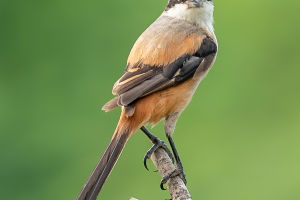The white stork, also known as Ciconia, is a large bird that is found in many parts of the world.
Known for its long legs and distinctive black and white plumage, the white stork has long been a symbol of good luck and fertility in many cultures.
Now, we will explore the physical characteristics, behavior, and habitat of the white stork, as well as its significance in human culture.
Firstly, let's take a closer look at the physical characteristics of the white stork. These birds are large, with a wingspan of up to 2 meters and a height of around 1 meter.
They have distinctive black and white plumage, with black feathers on their wings and tail and white feathers covering the rest of their body.
Their long necks and legs make them easily recognizable, and their bills are long and pointed, perfect for catching prey.
The white stork is a migratory bird, spending the winter months in Africa and returning to Europe and Asia to breed in the spring.
During the breeding season, these birds build large nests made of sticks and other materials, often on rooftops or other high structures.
They mate for life and are known for their strong bonds with their partners.
When it comes to behavior, the white stork is a fascinating bird. They are known for their distinctive clacking sound, made by their bills, which is often heard during courtship and territorial displays.
These birds are also skilled hunters, using their long legs to wade through shallow water in search of fish and other small prey.
They are also known to eat insects, small mammals, and even reptiles and amphibians.
In terms of habitat, the white stork is found in a variety of environments, from wetlands and marshes to grasslands and agricultural fields.
They are adaptable birds and can thrive in both rural and urban environments.
However, their populations have declined in some areas due to habitat loss and other environmental factors.
Finally, let's explore the cultural significance of the white stork. In many cultures, these birds are seen as a symbol of good luck and fertility.
In Germany, for example, it is believed that if a white stork builds a nest on your roof, you will have good luck and prosperity.
In some Eastern European countries, it is believed that the arrival of the white stork signals the beginning of spring.
The white stork is a fascinating and important bird, with a distinctive appearance and behavior.
Whether you are admiring their graceful flight or listening to their clacking calls, there is no denying the appeal of these impressive birds.
As we continue to learn more about the white stork and its habitat, we can work to ensure that these birds continue to thrive for generations to come.


